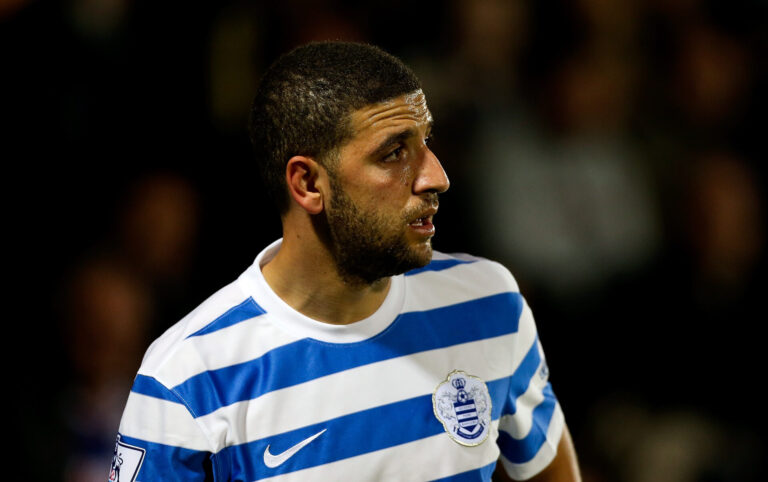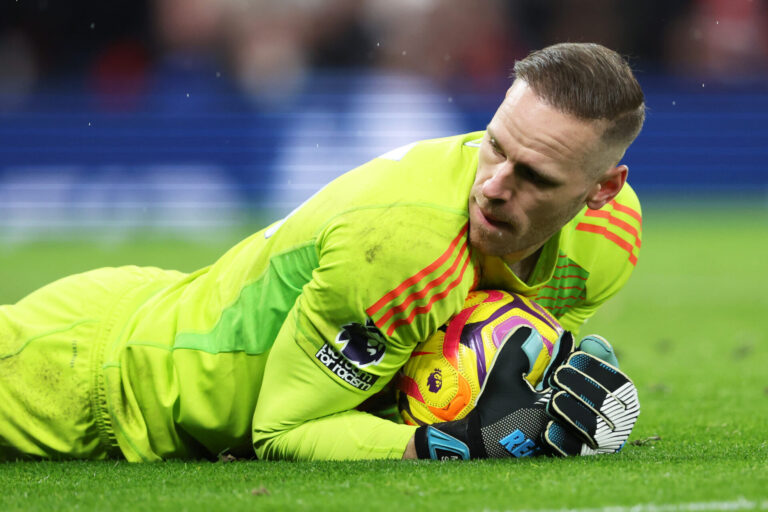What Does the Future Hold for San Siro as Inter & Milan Explore Their Options?
For the past number of years, it has been public knowledge that both Internazionale and AC Milan are actively exploring the possibility of abandoning the iconic San Siro Stadium in search of a more lucrative new build outside the city or on the razed ground of their beloved shared home. Amongst more casual European football followers, there is a general perception that the three-tiered Milanese marvel affectionately known as ‘La Scala del Calcio’ (after the world-famous La Scala opera theatre in the city centre) is approaching its final curtain call. However, that is not necessarily the case.
Will the San Siro Be Demolished?
If the question asks whether San Siro is going to be demolished, the answer is simple. No. If one is to ask what it will look like in ten years’ time or where both Inter and Milan will be playing their football by then, well, that cannot be answered so succinctly. The fundamental factor in the clubs’ mutual desire to depart or rebuild the structure synonymous with their illustrious histories hinges on the one thing seemingly more important than legacy, culture, and identity in modern football. Money.
Unlike in the English game, Italian clubs generally do not own their stadiums. Only three out of twenty current Serie A clubs hold full ownership over their home grounds and the case of Milan and Inter is no different. The Milan municipality owns the Stadio Giuseppe Meazza, which bears the name of the 1930s Calcio legend who represented both Milanese teams, and the local government is in charge of its administration. This means the clubs not only have to pay rent to use the stadium but also miss out on the commercial perks outside of matchdays that come with being the proprietor of a multi-use, 75,000-seater venue.
With the financial disparity between Europe’s top leagues and clubs growing year by year, even historical powerhouses like Milan and Inter feel cut adrift by the riches of the Premier League and the few state-owned or old-money elites that can still compete at the highest level—both on and off the pitch. This is the driving force behind the will to abandon San Siro for directors who are fully aware that aesthetic and cultural value do not transfer as smoothly onto a balance sheet.
Back in 2021, the clubs submitted a joint plan for the construction of a new 60,000-seat state-of-the art arena, a stone’s throw away from their current ground. The project would involve a massive regeneration of the San Siro area of the city but also entail the complete demolition of the Stadio Giuseppe Meazza in its current form. This idea gained much international attention as the football world began to fear the imminent destruction of one of the game’s most cherished symbols. However, this plan’s supporters have since completely shelved it because it never really took off in a practical sense. San Siro will not be demolished.
This is largely thanks to a recent decree from the Lombardy Regional Commission for Cultural Heritage, as stated in La Gazzetta dello Sport, which placed the second tier of the stadium under an anti-demolition restriction because it is turning 70 years old, achieving a status where it is protected by law as a listed building of historical and cultural significance.
There has been concerted political opposition to the destruction of ‘La Scala del Calcio.’ Previously in 2023, the Undersecretary for Culture, Vittorio Sgarbi, told Italian newspaper Il Giorno, “I am convinced that the stadium should not be demolished, not so much for its architectural value as for its importance as a symbol and for the protection of memory,” adding, “I will take all the necessary steps to prevent it from being torn down.” The mayor of Milan, Giuseppe Sala, has also reiterated his firm intention to keep the longstanding symbiosis between the city’s world-renowned clubs and stadium intact.
Sala has opened the door to potential renovations of San Siro, which has seen barely a lick of paint since the major refurbishment it underwent ahead of the 1990 World Cup, when a third tier was added on the north, south, and west sides, along with a roof and its instantly recognisable red girders. However, just as for Italia 90, the funding would have to come from the state due to the clubs’ understandable unwillingness to pour money into an asset they do not actually own.
The slow, grinding nature of Italian bureaucracy and the political red tape strapped across any redevelopment projects inspired Milan and Inter to take matters into their own hands and build themselves stadiums elsewhere. In September 2023, Milan submitted plans for their very own purpose-built home in San Donato, a satellite town just outside the south-eastern city limits. They even leased the land on which the construction was meant to take place in the hope of speeding the process along. Inter, meanwhile, set their sights on a home in Rozzano, another small suburban outpost, this time south-west of the city.
Opposition to these projects has been a rare source of unity across the Italian political spectrum. Democratic Party councillors Pietro Bussolati and Simone Negri expressed their reservations about Inter’s plans for Rozzano, a region underequipped to cope with an influx of 70,000 people on matchdays, which (via Milano Life) could threaten to “paralise the mobility of the entire south of Milan.”. Meanwhile, Regional Councillor for the ruling Brothers of Italy party Marco Bestetti (via mediaset.it) urged the clubs to remain at San Siro and “abandon the fantasy projects of improbable cathedrals in the middle of fields.”.
The prospective locations for these new stadiums have raised logistical and infrastructural problems as well as environmental concerns. In fact, a collection of 70 professors from different Milan universities wrote to Gianni Infantino, Aleksander Ceferin, and Gabriele Gravina (respectively presidents of FIFA, UEFA, and the Italian FA) with regard to the “problematic nature of building new infrastructure in underdeveloped areas,” as reported by Calciomercato.com. They highlighted issues related to the new AC Milan stadium that would involve the “transformation of about 30 hectares of land that has never been urbanised.”
Therefore, in the face of such extensive political and social backlash, Inter and Milan have been forced to renege on their hopes of building these new out-of-town stadiums. Back to square one, a redevelopment of San Siro—for all the many obstacles that will throw up—would appear to be the most likely way forward for the two Italian giants. While their initial plan to demolish and rebuild the stadium entirely is no longer legally viable, a regeneration of the original structure seems more feasible.
Last month, construction firm WeBuild proposed a redevelopment of the first tier, offering more corporate seating and possibilities for greater revenues through space for museums and car parks. They claim it could be completed within three years, losing only 5,000 seats on matchdays while the work is ongoing.
Mayor Sala admitted that “The issue would be whether or not the teams agree to renovate it.” Encouragingly for Milan and Inter, he did not rule out a sale of the stadium to the clubs, declaring that “everything is still possible”. The two clubs have both emphasised the necessity for significant changes if they do decide to stay at San Siro, primarily the opportunity to secure a leasehold deal for 99 years over the land.
That said, to expect any definitive news in the near future would be rather optimistic, given how long these processes tend to drag on for in Italy. The extent of the uphill task at the feet of both clubs was underlined by Inter director Alessandro Antonello, who claimed the battle to build a new stadium is ‘like climbing Everest’, warning San Siro is ‘stuck in the 1980s.’ With state funding for rejuvenation hard to come by and a sale to the clubs mired in a web of stagnant bureaucracy, it is unlikely we will see any major changes to San Siro’s facade in the immediate future.
While the stadium is set to host the opening ceremony of the Winter Olympics in 2026, along with the 2027 Champions League final and supposedly games at the 2032 European Championships, chances are that this will only impede the speed of any ownership change while the governing bodies apply the bare minimum of touch-ups in order to satisfy the organisers’ demands. As plans are drawn up and then erased, conversations are had and then forgotten, games will be played, and seasons will pass while one of football’s favourite cathedrals sits stuck between a glorious legacy and an uncertain future.









I don’t know what this article is trying to say, but what I know is that AC Milan is moving ahead with the construction of a new stadium. The local authorities have been in agreement over it and steps have been taken to clear out and fence up the area.
This is going ahead, the reason Sala is talking about selling San Siro is because it is going to be an empty in 4 years, Inter might still be there but from my knowledge AC Milan plan is to construct a new stadium because financially the club is stuck.
The club isn’t competing in Europe, they are simply just there. That is insulting to the club and its fans. So a new stadium allows for more money to come in. All this red tape will keep on coming but there isn’t much resistance it can offer at this location AC Milan has chosen .
Football in mordern world is all about money we should ask our self what push teams like newcastle to do some large business like 25m pouns with out any problem milan need to be in the hands of business men not vendors like cadinale`s late them hire galiani as c.o.e and what will happen in the transfer market.